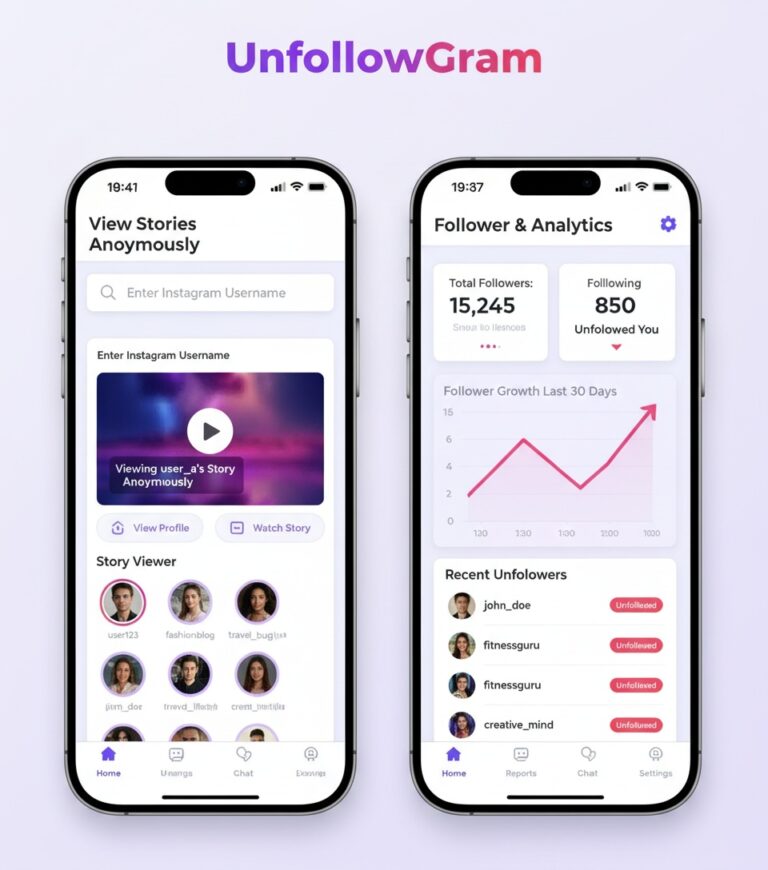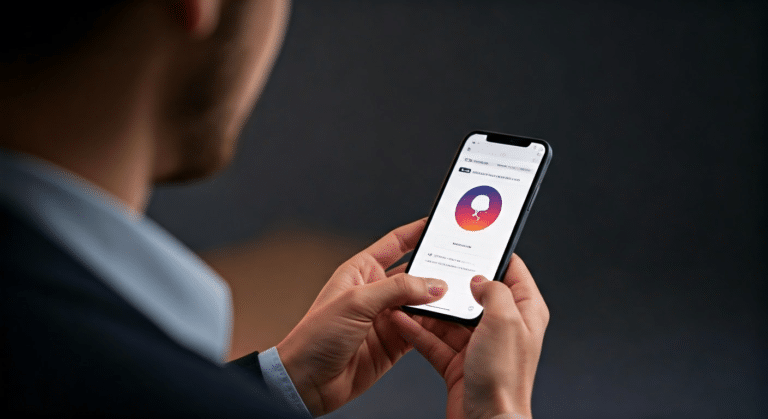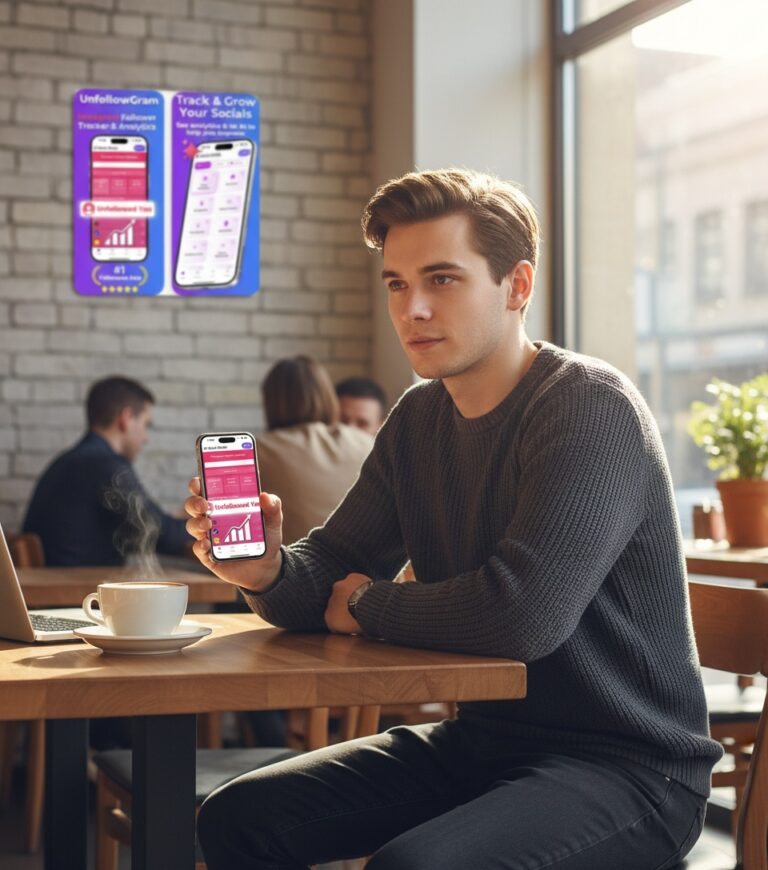Unfollowers: Who Stopped Following You on Instagram
Last Updated on November 8, 2025 by Ethan Reynolds
Do you want to see who recently unfollowed you on Instagram? You’re not alone. Understanding your unfollowers helps you analyze content performance and build a more engaged audience.
Instagram deliberately hides this information. No notifications when people unfollow. There is no built-in feature to check recent unfollowers. Most users remain unaware of their follower dynamics.
Let me show you how to track unfollowers safely and what these patterns mean for your account.
What Does “Unfollowers” Mean?
Unfollowers are people who previously followed your Instagram account but decided to unfollow. They once clicked that follow button, showed up in your follower count, and saw your posts. Then they changed their mind.
This happens constantly. People clean up their following lists. They lose interest. They reduce platform time. Even successful accounts with thousands of engaged followers experience unfollowers daily.
How to Check Your Unfollowers Safely
Many apps advertise as Instagram unfollower trackers. Most require your Instagram username and password. This is dangerous. You’re giving complete access to your account.
The safe approach uses OAuth authorization. Tools like UnfollowGram connect without ever seeing your password. You authorize limited access through Instagram’s official system. You can revoke access anytime.
Here’s how UnfollowGram works:
Visit the secure platform and connect your Instagram account. Click the authorization button. Wait about 60 seconds while the tool analyzes your follower count. View your complete list of recent unfollowers with timestamps.
Takes less than two minutes. Your password never leaves Instagram’s secure servers.
Why People Unfollow on Instagram
Content quality drops or changes direction. Your followers expected certain types of posts. When you pivot, some people lose interest. A travel account posting only product reviews? Followers leave fast.
Posting too frequently overwhelms feeds. Five stories and three posts daily? You’re probably annoying people. Instagram’s algorithm already shows your content multiple times.
Inactive accounts naturally lose followers. When you don’t post for weeks, people forget why they followed. They scroll through their following list during a cleanup and remove abandoned accounts.
Follow-for-follow relationships break down. Many users follow, expecting reciprocation, then unfollow within days. These transactional relationships rarely produce engaged followers anyway.
Is the Unfollowers App Safe?
Depends entirely on which app you choose. Not all tracking apps are created equal. Some are downright dangerous.
Red flags to watch: Apps requesting your password directly are never safe. No legitimate service needs your Instagram password. They access data through official API connections.
Apps with terrible reviews or ratings below 3 stars probably have security issues. Check app store ratings. Read real user reviews before downloading.
For iOS users, the followers tracking app provides a secure alternative. Strong ratings from thousands of users who successfully track unfollowers without security incidents.
Safe apps use OAuth-based login. They have clear privacy policies. Positive reviews from real users. Limited permissions accessing only follower lists.
Understanding Your Unfollower Patterns
Once you start tracking, you’ll notice patterns. These reveal important insights about your Instagram account.
Spikes in unfollowers after specific posts tell you what content your audience dislikes. Political opinion causing 50 unfollows? You’ve learned something valuable. You can decide whether to avoid such content.
Steady daily unfollowers are normal. Even accounts with amazing content lose 1-2% of followers weekly. People clean lists, become inactive, shift interests. A consistent low rate isn’t concerning.
Mass unfollows from new followers within days indicate follow-for-follow schemes. These users never intended to stay. They followed, hoping you’d reciprocate. Good riddance.
Tracking New Followers vs Unfollowers
While tracking unfollowers matters, monitoring new followers provides equally valuable insights. An Instagram new follower tracker shows who recently followed your account.
The relationship between new followers and unfollowers determines net growth. Gaining 100 followers but losing 80 weekly? Your account barely grows. Understanding both metrics evaluates strategy effectiveness.
Quality beats quantity. Losing inactive followers actually improves engagement rate. Gaining engaged followers who interact beats having thousands of ghost followers.
UnfollowGram helps you compare sources. If you gain followers from a hashtag but they unfollow within days, that hashtag attracts the wrong audience. Find hashtags bringing engaged followers who stick around.
Advanced Unfollower Analytics
Basic tracking shows who left. Advanced analytics reveal why they left and what you can do.
Engagement analysis before unfollowing shows whether people actually engaged with your content. Users who never liked or commented weren’t real fans. Losing them doesn’t hurt your engagement rate.
Time-to-unfollow metrics indicate how long new followers stick around. Most people unfollow within 48 hours? Wrong audience. Staying for months before unfollowing? Content quality might have declined.
Content correlation identifies which posts trigger unfollowers. UnfollowGram lets you view unfollower spikes on a timeline alongside post history. Easy to spot controversial content driving people away.
Can I Check Who I Have Unfollowed on Instagram?
Yes, though Instagram makes this difficult. The platform doesn’t maintain a history of accounts you’ve unfollowed. But tracking apps work both ways.
When you use UnfollowGram, it stores snapshots of your following list over time. Compare your current list against previous snapshots. See which accounts you’ve unfollowed and when.
This helps when you accidentally unfollow someone. Or want to re-follow accounts you removed during cleanup. Search through your unfollowed list and reconnect with accounts that interest you.
Some people track their own cleanup efforts. Systematically removing inactive followers? Seeing your progress keeps you motivated.
Managing Unfollowers Without Obsessing
You can’t please everyone. Some people will unfollow no matter how great your content is.
Focus on healthy ratios rather than zero unfollowers. Account grows 10% monthly but loses 3% to unfollowers? You’re doing great. Net positive growth beats stagnant follower counts.
Check unfollowers weekly, not daily. Obsessively tracking creates unnecessary stress. Weekly reviews give you enough data to spot patterns.
Don’t change content drastically based on small increases. Posting certain content causes five unfollowers but generates 20 engaged comments? The tradeoff is worth it.
Use unfollower data to refine, not overhaul, your strategy. Small adjustments based on patterns make sense. Abandoning your authentic voice because some people unfollowed doesn’t.
Real User Reviews About UnfollowGram
Thousands of Instagram users track unfollowers with UnfollowGram regularly. Reviews reveal common themes. People love finally understanding their follower dynamics.
The most common praise focuses on ease of use. People appreciate apps that work quickly without complicated setup. They want to check unfollowers in under a minute.
Security-conscious users rave about tools that don’t request passwords. Reviews frequently mention relief at finding secure alternatives to sketchy apps. Privacy matters to people who’ve heard horror stories.
Content creators find the most value. Reviews from influencers and businesses highlight how tracking helps them understand which content works. They analyze patterns to optimize posting strategy.
Choosing the Right Unfollower Tracking Tool
With dozens of options available, choosing feels overwhelming. Focus on these priorities.
Security should be your top concern. Only consider tools using OAuth authorization. Read privacy policies to understand how they store and protect Instagram data.
User interface matters for regular use. The best apps show unfollowers clearly without cluttered interfaces. You should find what you need within seconds.
Additional features enhance value beyond basic tracking. Look for tools showing new followers, mutual followers, inactive followers, and engagement analytics. Getting multiple insights from one tool saves time.
UnfollowGram provides all these features in one secure platform. Regular updates. Active developer support. Free access to core tracking features.
Integrating Unfollower Data Into Your Strategy
Tracking becomes valuable when you actually use the data. Raw numbers mean nothing without action.
Create a content audit process. Notice unfollower spikes? Review posts you published around those dates. Identify themes in content that trigger unfollows. Decide whether to adjust or accept that some content won’t appeal to everyone.
Test different posting times and frequencies. Lose more unfollowers on days with multiple posts? Try spacing content. Weekday posts trigger more unfollows? Adjust your schedule.
Engage with remaining followers more actively. Every unfollower once found your content interesting. Strengthen relationships with current followers through authentic engagement to reduce future unfollows.
Frequently Asked Questions
How many unfollowers is normal?
Most Instagram accounts lose 1-3% of followers weekly. Even with great content. Accounts with 10,000 followers might see 100-300 unfollowers weekly while still growing overall. The key metric is net growth.
Do celebrities track their unfollowers?
Many influencers use tools like UnfollowGram to understand their audience. They don’t obsess over individual unfollows. Their teams analyze patterns to optimize content strategy and evaluate campaigns.
Can I stop people from unfollowing me?
No, and you shouldn’t try. People have the right to curate their feed. Focus on creating great content that attracts engaged followers rather than preventing unfollows.
Should I message people who unfollowed me?
Absolutely not. Contacting people who unfollowed you is awkward. Let them go without drama. If someone decides your content isn’t for them, respect that decision.
Final Thoughts on Tracking Unfollowers
Understanding unfollowers helps you build a better Instagram presence. But it shouldn’t consume your energy.
Use UnfollowGram to gain insights. Identify patterns. Optimize your content strategy. Then focus on what really matters: creating authentic content that resonates with your target audience.
The best approach combines regular monitoring with strategic action. Check who unfollowed you weekly using secure tools. Analyze patterns in your data. Make small adjustments to your strategy.
Remember that building a quality audience takes time. You’ll gain engaged followers and lose disinterested ones along the way. That’s normal. That’s healthy. Actually beneficial for your account’s overall performance.
Want to start tracking safely? UnfollowGram prioritizes security while providing valuable insights. Your Instagram growth depends more on the quality of remaining followers than worrying about everyone who left.
Focus on finding the best tools that help you understand your audience better. Track your Instagram profile growth and unfollowers effectively. UnfollowGram gives you complete control over your follower analytics without compromising security.
Ethan (co-founder) is a seasoned social media marketing strategist with over a decade of experience in digital branding, audience growth, and engagement strategies. He holds a Bachelor's degree in Marketing and has earned multiple certifications, including the Meta Certified Digital Marketing.
Ethan has worked with global brands to refine their social media presence, leveraging data-driven insights and cutting-edge strategies to optimize engagement and retention. As the founder of a boutique social media consultancy, he has helped influencers, businesses, and startups scale their online presence organically. He is also a frequent contributor to industry publications and a speaker at digital marketing conferences.







